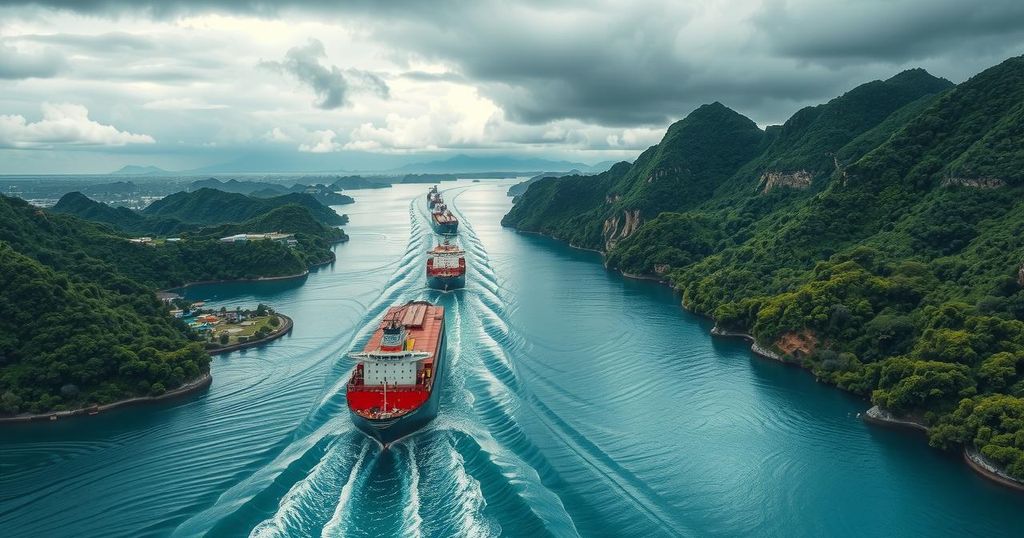Climate Change Poses Challenges for Panama Canal Operations

The Panama Canal has been vital for global shipping since 1914, but its operations are increasingly threatened by climate change and rainfall variability. Recent drought years affected shipping volumes and transit efficiency, with forecasts indicating more severe weather events in the future. Understanding and managing the canal’s watershed is critical to maintaining operational stability and ensuring continued global trade connectivity.
The Panama Canal, an 82-kilometer-long waterway that links the Pacific Ocean with the Caribbean Sea, has served as a crucial channel for global shipping since its inauguration in 1914. The canal’s significance has recently gained political attention, particularly from U.S. officials advocating for reclaiming ownership. Weather variations, notably rainfall changes, are increasingly impacting its operations, forecasting greater unpredictability for this vital shipping route as a consequence of climate change.
The canal functions through a system of locks, allowing vessels ranging from yachts to massive Neopanamax ships to navigate elevations, a process which takes between 8 to 10 hours. This shortcut ensures substantial savings in both time and fuel, as ships bypass the lengthy route around South America. Currently, about 5% of the world’s shipping traffic relies on the Panama Canal, underscoring its importance in global trade dynamics.
Precipitation levels are crucial for maintaining water levels in Gatun Lake, necessary for safe ship navigation. The lake suffers from water loss due to evaporation, pumping for local water supply, and the operationalneed to supply the locks. Although Panama typically enjoys over 2,000 millimeters of rainfall annually, recent decades have seen drought years, which profoundly affect canal operations.
The Panama Canal Authority has responded to low water levels by reducing the maximum number of ships that can transit; for example, in 2024, only 11,240 vessels passed through, a significant decrease from 14,080 in 2023. The authority’s restrictions on ship drafts necessitate off-loading cargo, resulting in longer wait times at the locks and impacting supply chain efficiency. Thus, proactive planning for shipments through the canal is essential for shipping companies.
The link between recent drought years in the canal watershed and El Niño phenomena suggests that weather patterns are impacting canal operations. These dry conditions have occurred during three of the last 30 years, aligning with historical weather data. Nevertheless, current research does not robustly attribute these changes directly to climate change, but rather to natural oscillations within climate patterns.
As climate change progresses, the intensity of severe storms is projected to rise, with past records indicating a 10% increase in storm strength. Although excess rain may appear beneficial for navigation, the canal has faced full shutdowns due to extreme precipitation, including a significant instance in 2010. Efforts are ongoing to improve understanding of the watershed’s hydrology to bolster resilience against adverse weather events and maintain optimal conditions in Gatun Lake.
Ongoing initiatives, like the Agua Salud Project, aim to study the role of forest cover in the watershed, as forests help regulate rainfall distribution. Despite recent challenges with water scarcity, there is optimism for shipping in 2025, as Gatun Lake’s water levels are currently reported at their highest in five years.
The Panama Canal’s operations are increasingly influenced by climatic conditions, particularly rainfall variability, exacerbated by climate change. Fluctuating water levels in Gatun Lake directly affect canal transit and shipping logistics, which are critical to global trade. Proactive measures and enhanced understanding of the watershed are necessary to ensure future resilience against extreme weather events while maintaining efficient shipping through this crucial maritime route.
Original Source: eos.org






